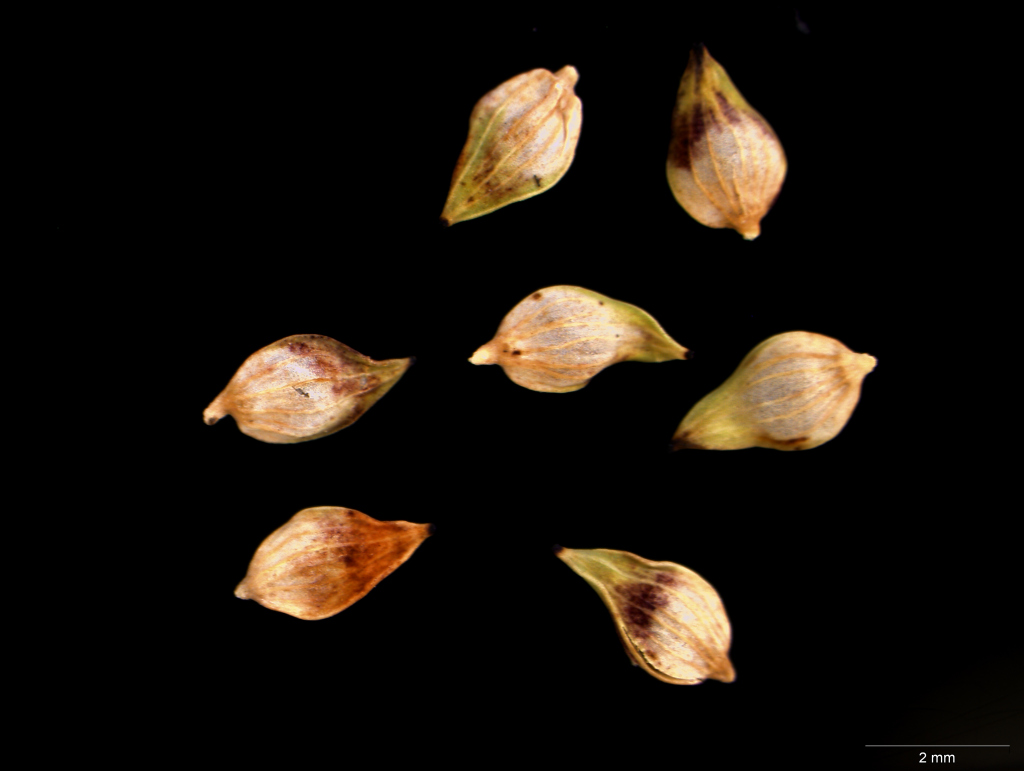Carex hypandra
F.Muell. ex Benth. Alpine Fen-sedgeRhizome short; shoots densely tufted. Culms erect, trigonous, smooth below, scabrous above, 10–35 cm long, c. 1.5 mm diam. Leaves as long as or exceeding culms, 2–3.5 mm wide; sheath yellow-brown to black at very base; ligule acute to obtuse. Inflorescence narrow, erect, 2–8 cm long, with 4–6 spikes solitary at nodes; lowest involucral bract exceeding inflorescence. Spikes subsessile, ± contiguous, erect at maturity, 0.5–2 cm long; uppermost spike with female flowers above male flowers or occasionally entirely male; lower spikes female; glumes obtuse to truncate, very dark brown to black; female glumes 2–3 mm long; utricles 2.4–3.3 mm long, 1.4–2 mm diam., broad-ellipsoid to ovoid, strongly several-nerved, minutely papillose near apex, otherwise colliculate, yellow-green tinged red-brown; beak to 0.3 mm long, with apex truncate; style 2-fid. Nut broad-ellipsoid, lenticular, yellow-brown. Flowers summer.
VAlp. Also NSW, Tas. Known in Victoria by only a few collections from Mt Hotham, Mt Nelse, and Mt Willis, but very likely more widespread and overlooked for the very similar C. gaudichaudiana.
Very close to, and often occurring with Carex gaudichaudiana (at Mt Kosciusko) where they may hybridize. Differs from C. gaudichaudiana in its more congested inflorescence, with the uppermost spike usually with female flowers above male flowers, and in the slightly shorter but relatively broad utricle with the mouth narrower, truncate, blackish and smooth (notched to obliquely truncate, pallid and occasionally minutely hispid in C. gaudichaudiana).
Wilson, K.L. (1994). Cyperaceae. In: Walsh, N.G.; Entwisle, T.J., Flora of Victoria Vol. 2, Ferns and Allied Plants, Conifers and Monocotyledons, pp. 238–356. Inkata Press, Melbourne.
 Spinning
Spinning
